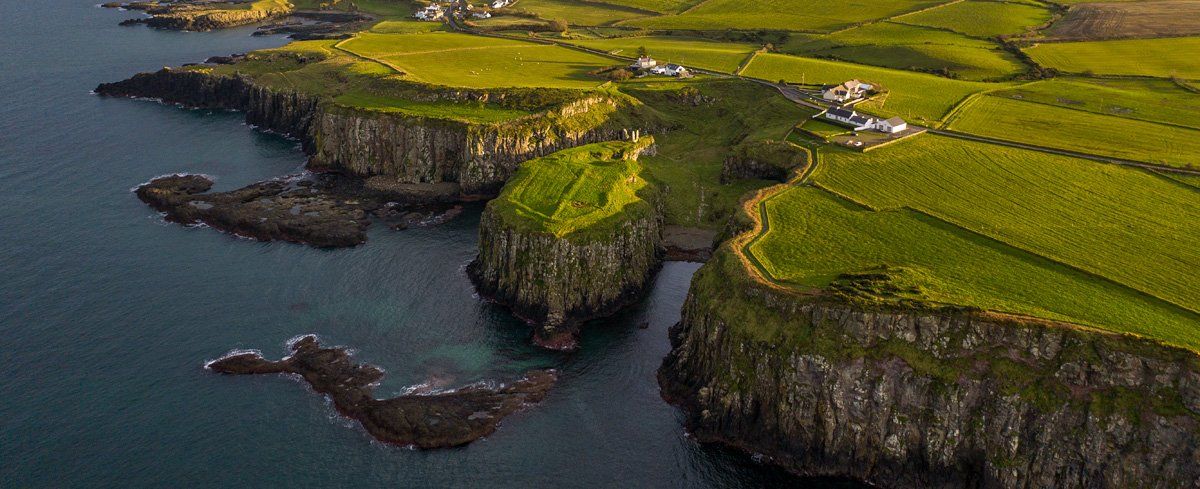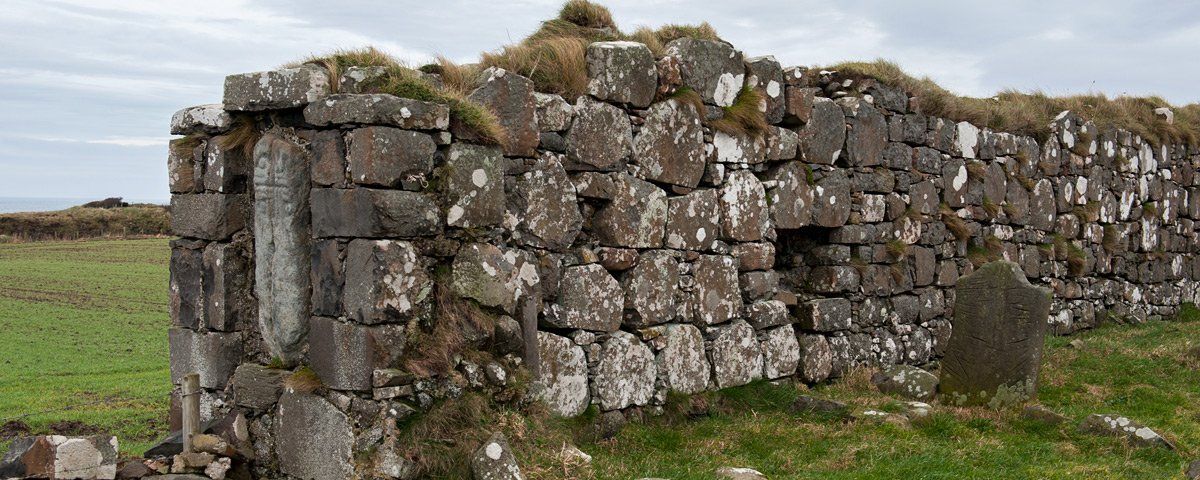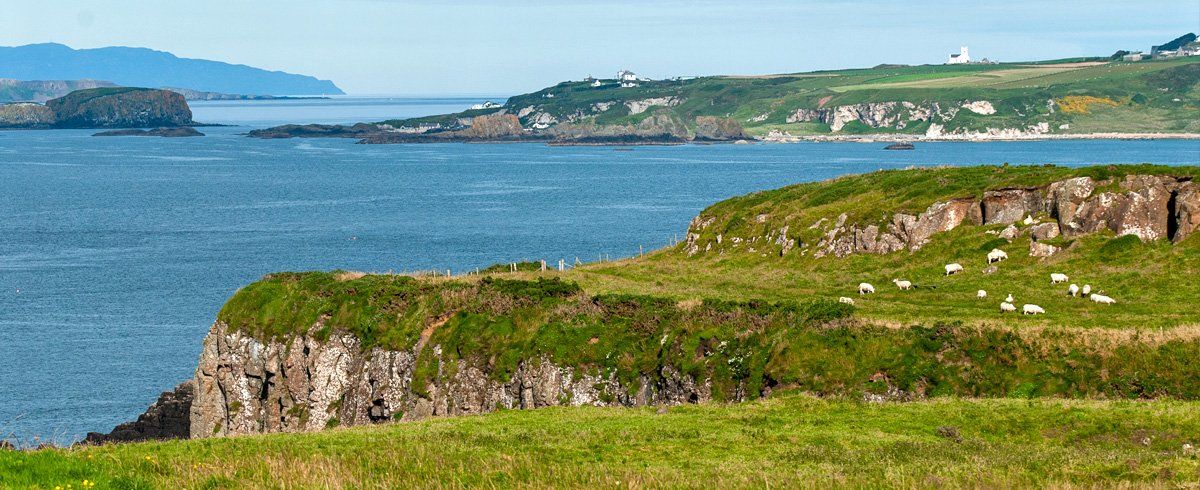If you walk up to the castle and takes in the breathtaking views across to Portmoon and the Scottish Isles, you can rest assured in the knowledge that you have walked in the footsteps of Saint Patrick whose name in Latin was Patricius. He is known to have visited here on several occasions for baptismal ceremonies and on one of these occasions baptized a local man called Olcan, who became the Bishop of Armoy, Olcan died in 480 AD. He may well have baptised St. Gobain (Gobhan) here, Gobain was a builder and followed the Christian philosophy of Patrick, he is credited with building the original church of Templastragh (Temple of the Flame) and another church in Glenshesk.
You will find the ancient ruin of Templastragh along the clifftop between Dunseverick and Portbraddan, accessible from the path or the road down to Portbraddan from the main Causeway Coastal Route. The ruin we see today dates to the 1600s, the original site is believed to have been further north towards the castle. A stone in the gable wall carved with a Christian cross may have come from the original church that Gobain built - it is said that a divine light guided him to where he finally built the church of Templastragh (Temple of the Flame). Another small, beautiful and picturesque 'church' in Portbraddon referred to as the smallest church in Ireland and loved by visitors and especially the local community was demolished by the new owner who purchased the property in 2017 after the Rev. Con Auld sold the property.
On the far end of the headland, you will find a depression which is well or water retainer named after St. Patrick, it is reputed to be one of the key holy wells of Ireland, though sadly, the baptismal stone and seat that he used still lies somewhere on the ocean floor below, records refer to it being tumbled over the cliff when the castle was attacked and destroyed by the army of General Munro during the 1641 rebellion. It is worth noting that St Patrick had a significant presence in North Antrim from Slemish to Ballycastle, Armoy, Dunseverick and Coleraine. This was when the political and religious power base was at Downpatrick, anywhere outside the centre was kept in the shadows hence the lack of any real recognition to his wider influence and presence in Ulster.



